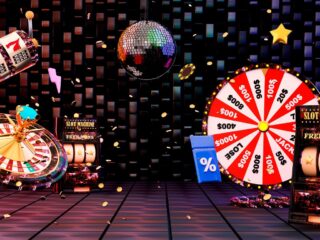
You’ve probably spent hours perfecting your strategy on demo modes, watching those fake credits pile up as you hit bonus after bonus. Then you switch to real money and suddenly everything feels different. The wins seem smaller, the losses sting more, and that “winning system” you developed crumbles within minutes.
I used to think demo modes were perfect training grounds until I tracked my performance across 50 different slots—playing each in demo mode for 500 spins, then real money for 500 spins with identical bet sizes. The results completely changed how I view free play. Here’s what demo modes actually teach you and where they fail miserably.
Established operators like Party Casino offer both demo and real money versions of the same games, making it easy to compare your performance and emotional responses between the two modes.
The Great Demo Deception
Demo modes aren’t rigged to pay better (that’s a myth), but they create a psychological environment that’s nothing like real money gambling. When I tracked my reactions during 25 hours of demo play versus 25 hours of real money sessions, the differences were startling.
In demo mode, I:
- Made riskier decisions without hesitation
- Felt excited about wins but indifferent to losses
- Increased bet sizes casually when losing
- Played for longer sessions without fatigue
- Focused purely on entertainment value
With real money, I:
- Second-guessed every betting decision
- Felt genuine stress during losing streaks
- Obsessed over bankroll management
- Experienced decision fatigue much faster
- Constantly calculated profit and loss
The psychological gap between fake and real money is massive. Demo mode teaches you about game mechanics, but it can’t replicate the emotional rollercoaster of actual gambling.
What Demo Modes Actually Teach You
Despite their limitations, demo modes excel at teaching specific skills that directly transfer to real money play.
Game mechanics understanding: I learned how cascading reels work in Sugar Rush, how expanding symbols function in Book of Dead, and the exact trigger conditions for Bonanza’s free spins. This knowledge saved me from costly confusion during real money sessions.
Volatility assessment: Playing 500 demo spins reveals a slot’s personality. High volatility games like Dead or Alive 2 showed long stretches without significant wins, while low volatility slots like Starburst delivered frequent small payouts. Understanding these patterns helped me choose appropriate bankroll sizes.
Feature timing: Demo play taught me that Gates of Olympus free spins typically trigger every 120-180 spins, while Sweet Bonanza bonuses come roughly every 90-130 spins. This timing knowledge prevented unrealistic expectations during real sessions.
RTP verification: I could test whether a slot’s stated 96.5% RTP felt accurate over extended demo sessions. Games that seemed unusually tight in demo mode often performed similarly with real money.
Key insight: Demo modes are excellent textbooks for game mechanics but terrible teachers for gambling psychology.
Where Demo Modes Fail Completely
The biggest demo mode failure is teaching bankroll management. When losses don’t hurt, you develop terrible habits that destroy real money sessions.
Bet sizing disasters: In demo mode, I routinely increased bets after losses, thinking “the next spin has to hit.” This aggressive approach worked with unlimited fake credits but devastated my real bankroll during cold streaks.
Session length misjudgment: Demo sessions felt effortless, so I assumed 3-4 hour real money sessions would be equally manageable. Wrong. Decision fatigue and emotional stress made real sessions exhausting after 90 minutes.
Bonus hunting mentality: Demo mode reinforced the dangerous belief that bonuses are “due” after certain spin counts. This led to costly chasing behaviors with real money when expected bonuses didn’t materialize.
Risk tolerance miscalibration: Watching fake money disappear feels like entertainment. Watching real money vanish triggers genuine stress responses that affect decision-making quality.
The Smart Way to Use Demo Modes
After 50 hours of comparative testing, here’s how I now approach demo play:
For learning only: I use demos to understand new games, not to develop betting strategies. Five minutes explains the paytable and features; longer sessions create false confidence.
Mobile testing advantage: mobile slots free versions help you understand how games perform on different devices before committing real money to mobile gambling sessions.
Reality check simulations: I play demos with realistic bet sizes relative to my actual bankroll. If I have $200 to gamble, I demo with $1-2 bets, not $10-20 bets.

Volatility testing: I use 100-200 demo spins to gauge a slot’s temperament before risking real money. This prevents nasty surprises during live play.
Feature frequency tracking: I note how often bonuses trigger in demos to set realistic expectations for real money sessions.
Warning: Never play demo modes when you’re frustrated from real money losses. The easy wins can make you overconfident about your next real session.
The Bottom Line Truth
Demo modes teach you the “what” of gambling—what symbols pay, what features exist, what the interface looks like. They completely fail at teaching the “how”—how to manage emotions, how to stick to limits, how to quit while ahead.
The players who succeed with real money treat demos like quick tutorials, not extended practice sessions. Learn the mechanics, understand the volatility, then jump to real money with appropriate stakes and realistic expectations.
Demo mode success doesn’t predict real money results. The sooner you accept this reality, the better prepared you’ll be for the psychological challenges of actual gambling.












